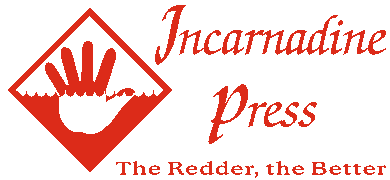#7 – The Four Roles from D&D 4th edition
For decades, if level was king of Dungeons and Dragons, then class was the power behind the throne. Cleric. Fighter. Magic User. Thief. What you could do in the world was sharply circumscribed* by what class you chose. Magic Users had to study their spellbooks. Thieves could climb walls when no one else could. Pages and pages of elaborate subsystems and class-specific spells and equipment. 2nd Edition brought class-specific handbooks and “kits” of even more specific abilities. Piles and piles of text about what your class would allow you to do.
But the game itself never addressed the question of what you should do.
Along comes 4th edition D&D, with its design goal of baking teamwork right into the system. And they do it with four little words: Leader, Defender, Controller, and Striker. Four roles that describe how a team functions. Four roles that explain why classes do what they do. Four roles that tell you how to play the game.
The four roles take the fundamental D&D notion of niche protection and breathe life into. They explain why each niche exists, and how they interact with other niches. And they offer guidance and structure for interacting with the game in several ways:
- Character Creation. When navigating the vast options of feats, powers, and equipment, your role gives you clues about what will do the most good. If you’re a Controller and need to decide between an option that lets you do more damage to a single opponent, and one that lets you damage a great many different opponents, you’re probably better off taking the latter. The roles let you know that doing scads of damage is a speciality of Strikers, so leave that to your group’s Rogue or Warlock.
- Tactical Play. Likewise, in the midst of an encounter, your role reminds you what you’re best at. If you’re a Leader, you know it’s your job to make the rest of the party shine. When you see an opening to grab for the glory at the expense of the party, your role reminds you that you’re there to help others, and can do that really well.
- Sustained Interest. Since each role affects the game in different ways, and provokes unique synergies with the other roles, there’s greater incentive to stay interested in the game when it’s not your turn. Maybe the Leader will give your Defender a chance to heal, or the Controller will set you up for an opportunity attack on the bad guy. Best to pay attention!
- Social Reinforcement. Roleplaying is a social activity, and the four roles provide a framework for helping one another within the game. When you help someone in the game, they say “Thanks” in real life. The teamwork in the game mirrors and reinforces the cooperation that goes on around the table. We’re all helping each other imagine this heroic battle against a malevolent beast, just as our characters are helping one another fight the monster as well.
Hardwired teamwork is the great strength of D&D 4th edition, setting it apart from previous versions. And the cornerstone of that teamwork are the four roles.
Up next: I am the walrus, you are Ancient of Stars
*Perhaps classes aren’t quite as “sharply circumscribed” as I was once led to believe. When I was in 3rd grade, I had played D&D once, but had no opportunity to play again. So when I overheard two “worldly” 4th graders arguing over the game on the bus, my ears perked up. One guy wanted his magic user to be able to use a magic sword the group had found. His brother, the DM, said “It says right in the book that magic users can only use a quarterstaff or a dagger. You can’t use the sword!”
The player responded, “Maybe I can’t use it, but I can still keep it.”
The DM countered, “No, you can’t even pick it up.”
The player was defiant, “What do you mean I can’t pick it up? What happens if a magic user picks up a sword.”
The DM had the last word, “You just die, man. You just die.”
That’s quite a way to go around killing wizards. Simply hand them a sword and they fall over dead!
